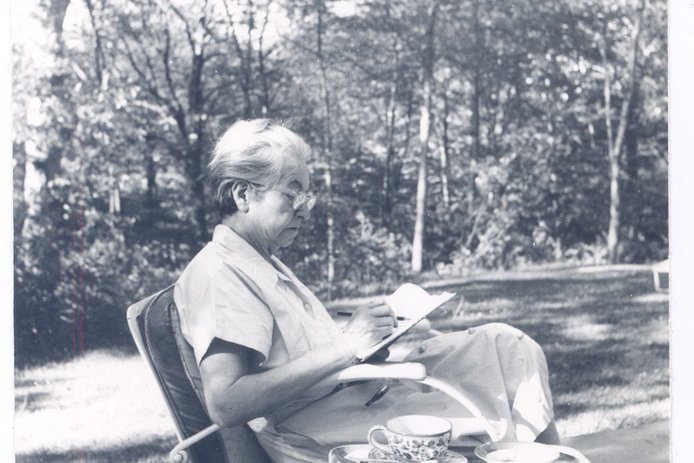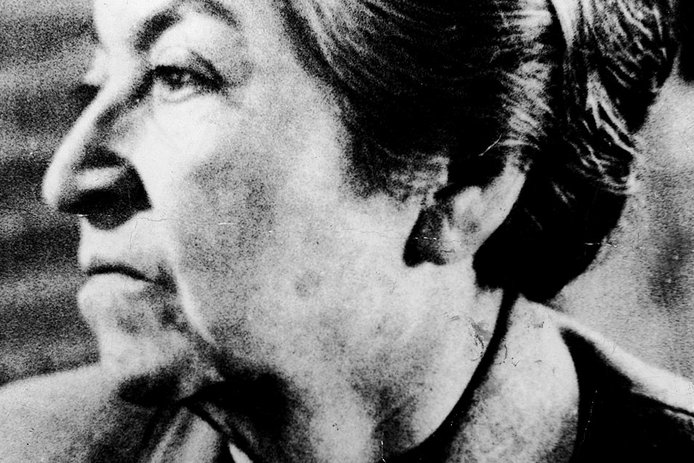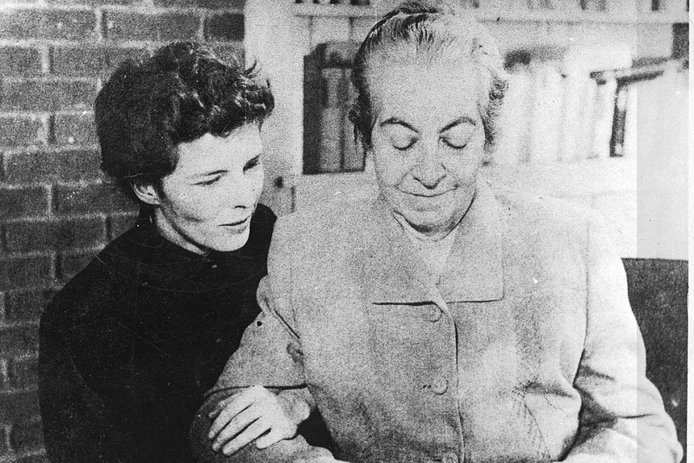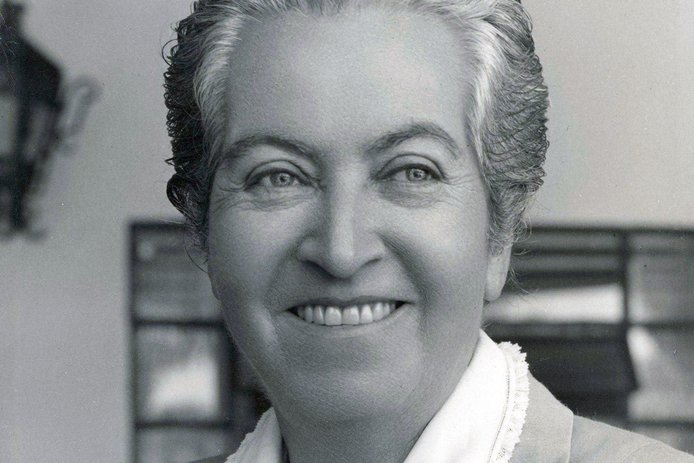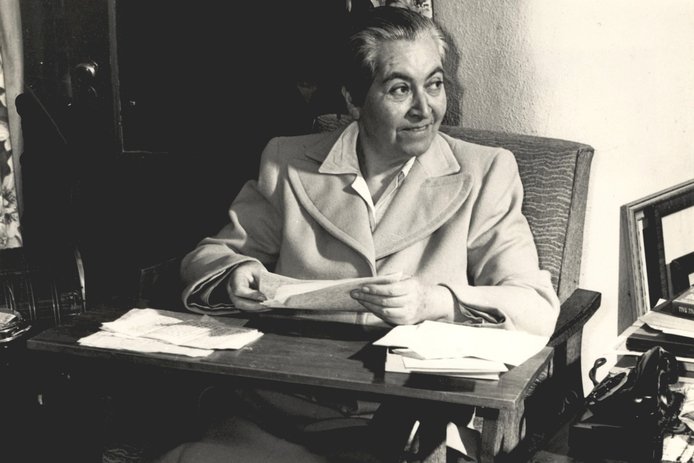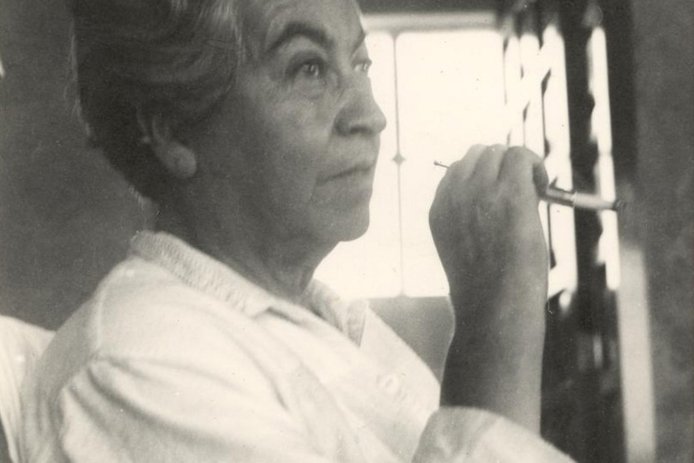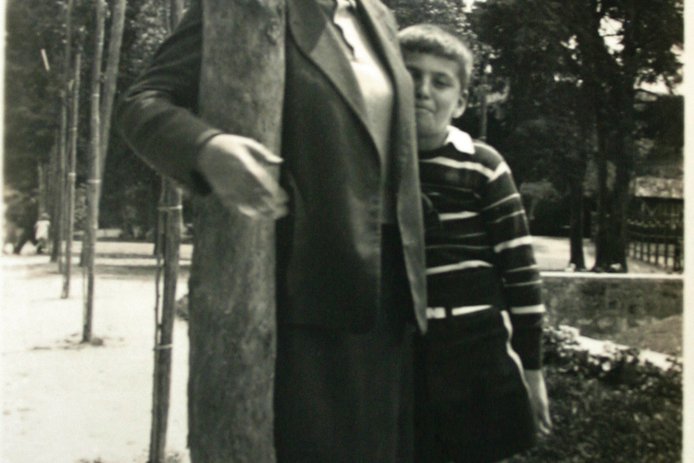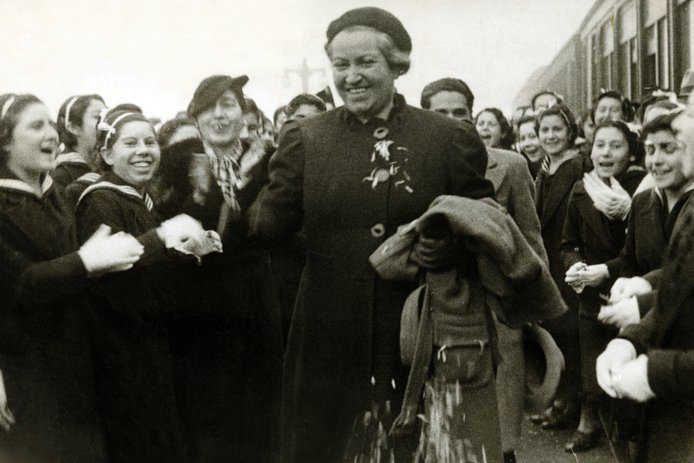Our Gabriela
A round and an 11-year-old girl. A round where Gabriela Mistral is at the center and her companions laugh and throw stones at her. The crime of the girl is to have stolen some white paper sheets. Gabriela is expelled from the school where her half sister Emelina took her and she is so poor that she doesn’t even have shoes to go to other school. 45 years later she became the first Hispano-American woman awarded with the Nobel Prize. Her work rises to unforeseen heights, above the Andes.

Imagen: Javiera Cruz Salgado
If Gabriela Mistral’s life was made into a movie, it would begin with the image of a child born in Vicuña on April 7, 1889. A woman, that after being educated in Chile travels the world with a bunch of pencils and several notebooks in her pockets. Gabriela has everything against her but she becomes a teacher, she runs schools, alphabetizes children from the southernmost tip of South America to Mexico, she inspires the Mexican educational revolution and becomes a consul for Chile in numerous countries.
On January 10, 1957, she dies in New York in front of her beloved Doris Dana, also her literary executor. “Triumph” was the last word uttered by the woman also who had to overcome the loss of Yin-Yin, the boy she loved and raised as her own.
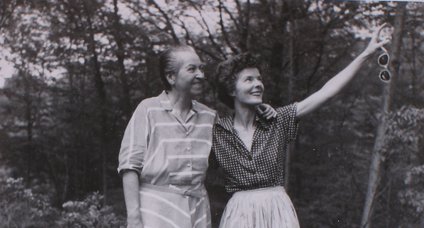
But Gabriela didn’t want to die then or now. That’s why she wrote till her wrists ached and she became one of the foremost intellectuals of her time. She was a world class thinker, one that lived for poetry down to her last breath. In one of the messages she dedicated to children, Lucila Godoy –her real name- tells of her wishes to transcend: “Many years from now, when I’m nothing more that a handful of quiet dust, play with me, with the soil from my bones,” she wrote.
“Many years from now, when I’m nothing more that a handful of quiet dust, play with me, with the soil from my bones.”
— Gabriela Mistral.
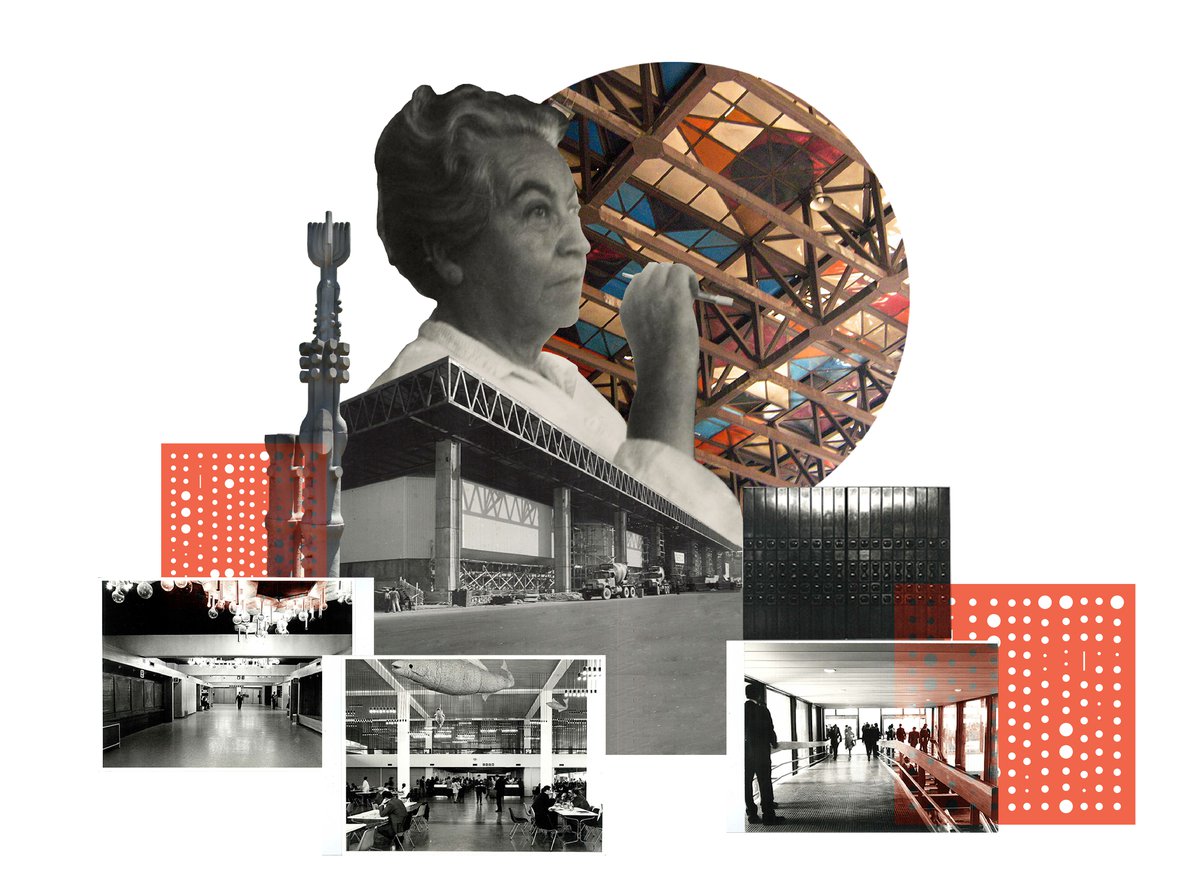
Collage: María José Bunster
Mistral warned us in prose and in verse that she hates quiet niches. In that same message to children she says she doesn’t want to be a picture nailed to a wall or a brick for a school. She says she wants to sing at dawn or be the soil with which the children play in the fields. “Oppress me, dissolve me”, she says. “And when you’ve made any kind of image with me, tear it apart each time you can,” she continues.
“Oppress me, dissolve me. And you’ve made any kind of image with me, tear it apart each time you can.”
— Gabriela Mistral.
To reveal this multifaceted Gabriela Mistral, always alive and in constant construction and deconstruction, that has been the work of GAM.


